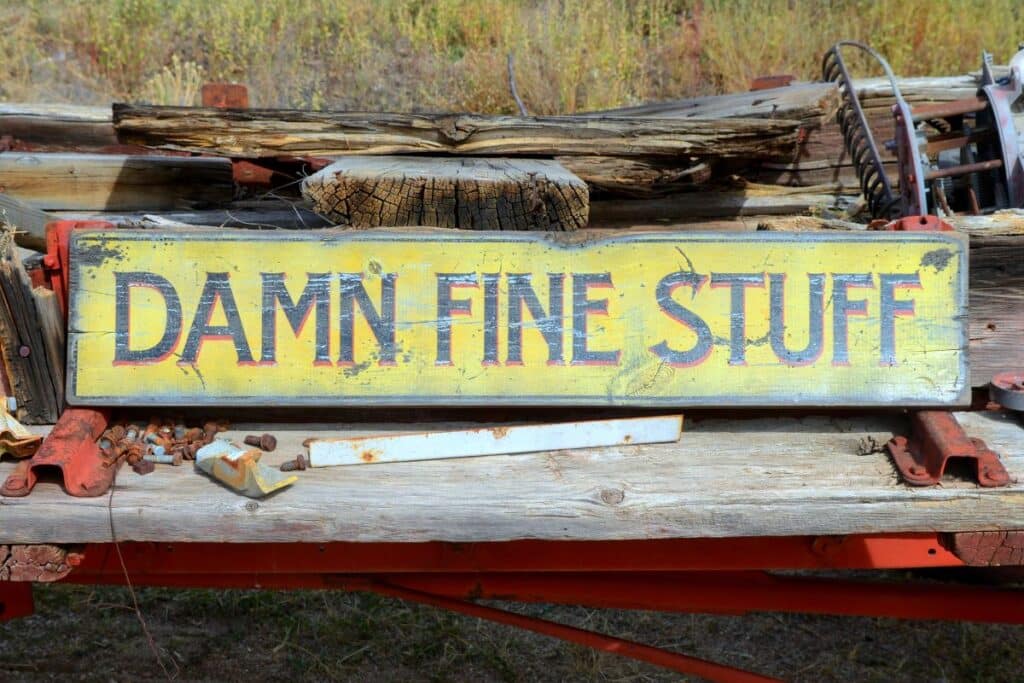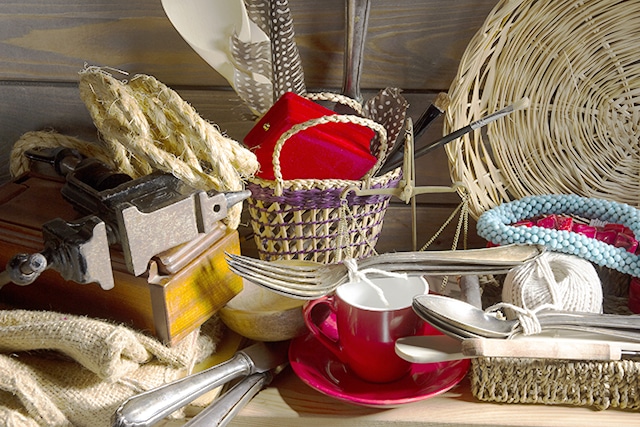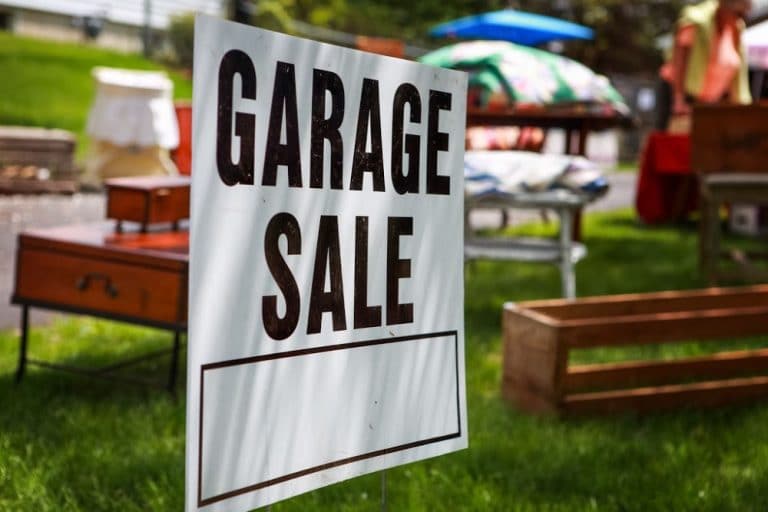10 Ways To Sell Your Stuff and Make Extra Cash
This website may earn commissions from purchases made through links in this post.
Looking to make some extra cash? There are many ways you can sell your stuff; here are 10 ways to sell second-hand stuff in Australia.
Selling your unwanted clutter is a quick way to make some extra cash while also making extra room at home.
Over the years, we’ve sold stuff during a change of seasons: when we’ve moved house, when we’ve had kids, and when the kids have outgrown their things.
I’ve tried many selling methods, online and offline, for selling our unwanted clutter. It takes a bit of work to make money from selling your stuff, but the spare cash makes it worth the effort.
The side benefit (or downside, depending on your experience) is the people you meet along the way. It’s a much more intimate and interesting experience than shopping in a store.
Here are 10 ways to sell your second-hand stuff with some of my experiences and tips.
Where to Sell Your Things Locally in Australia
Selling locally (not online) means you don’t have to worry about calculating postage or shipping things. People can come to you (or you can meet in a public place for safety).
Here are my top five ways to sell stuff offline.
1. Hold a Garage Sale
If you have a lot of things to get rid of, a garage sale makes it quick and easy.
We have held a garage sale, and we managed to get rid of most of our stuff and make nearly $500, which is not bad for clutter.
Planning and preparation are key for a successful garage sale. Start early (as in weeks before, if you can) so you have plenty of time to make the day flow smoothly.
You want to set your items out neatly so it is super easy for people to buy and price them reasonably, so you get rid of as much as possible.
Check out the article on how to hold a garage sale for more pro tips on getting the most out of the event.
3. Local Markets
An alternative to a garage sale, if you have quite a few items, is to set up a stall at your local markets or to keep an eye out for school or church car-boot sales.
I haven’t held my own store, but I do help our local Lion’s Club run our local markets as a volunteer (which involves a 3:30 am start on a Sunday to help stallholders get in).
At first, I was surprised that there is a thriving market for second-hand goods at farmer’s markets. Items like tools that can be resold or furniture that can be restored and flipped are always popular. However, the most common category of used items sold second-hand is clothing, shoes and accessories [source].
Causal stall holders who have the best success are the ones who use a shade tent/marquee, set out their wares on tables, hang clothes on hangers, price items, and otherwise present their goods to make it easy and attractive for prospective buyers to buy.
The downside to the markets is there is a fee involved, and you might not sell enough to cover the fee. Going in with a friend and splitting the fee can reduce the cost. You’re also at the mercy of the weather, so be prepared for wind (make sure to secure your marquee, fly-away marquees happen), rain, and shine.
Here are some commonly requested things stallholders have asked me for so you can remember to pack them:
*masking tape
*screwdriver
*hammer to secure tent/marquee (or you can get a gazebo base pod/weight from the camping store – better if the ground is very compacted, which it probably will be)
*spare change
*bags
*pens or marker
*PRO TIP: A headlamp is super convenient for setting up in 4 am darkness!
*PRO TIP 2: Pack for easy set-up because you may have to unload quickly and move your car for other stallholders to get in.
4. Local Second-hand Dealer
For single items or specialty items, you can take your goods to your local Cash Converters or pawn shop. You probably won’t get as much as selling your items yourself because the dealer will want to make a profit.
My brother worked in a pawn shop. He said that people often had over-inflated ideas of what their items were worth. This is good to keep in mind if you go this route.
5. Local Classifieds
Do they still exist in 2023?
Tell ’em they’re dreamin’, son!
In other words, not so much – it depends on where you live and if you still have a local paper.
If you do have a local paper, a free or cheap ad can be a good way to sell your stuff locally.
You will want to consider the demographic of people who still read the local paper – probably not the demographic looking for a Playstation 4.
Where to Sell Your Stuff Online in Australia
While old-fashioned ways to unload your unwanted things still work, there are more opportunities to reach a bigger audience if you sell your stuff online.
5. Gumtree
Gumtree is the most popular online place to list your second-hand goods in Australia.
It’s free to list your items – if you want ‘extras’ like keeping your ad on top of the page, then you have to pay for those. Gumtree also makes it easy to trade locally, which saves the hassle of postage.
Take good photos in natural light from many angles and write a thorough description with dimensions (if applicable) and any and all information someone will need, including any terms and conditions.
It’s a good idea to check out what other people are pricing similar items at so yours are priced competitively.
Don’t be afraid to set firm terms – most people are lovely, but some people can be a pain in the butt to deal with. It’s your stuff; you can set the price and the rules. Let people know up front that if they don’t bother turning up, you’ll sell it to the next person on the list.
6. Trading Post
The Trading Post still exists!
It has always been a popular way to trade second-hand items. In true The Castle style, my grandfather would always buy the Trading Post each week to read up on what other people were selling – now we can do it online.
Like many local classifieds, it is free to list items under $500 on the Trading Post.
The tips are similar to Gumtree: take good photos in natural light from many angles, write an accurate description with as many details as possible, and price competitively to encourage a sale.
7. eBay
A lot of people have a lot of success selling their second-hand items on eBay. The upside to eBay is that your potential audience is quite large. The downside is that you have to pay upfront to list your items – even if they don’t sell.
If they do sell, then you have to pay extra. And then there’s working out the postage.
I have tried selling on eBay, but this is one avenue I haven’t been successful with. For tips on selling successfully on eBay, check out this article from Snail Pace Transformations.
8. Facebook Marketplace
Facebook can be a good way to sell your unwanted gear locally.
You have two options here: you can join a local buy, swap, and sell group or page and list your stuff, you can make your own page and promote that page, or you can list things through the Facebook marketplace.
I successfully sold my wedding dress through our local buy, swap, and sell group, and it was my favourite way to sell things second-hand for a while.
9. Fishpond and other Online Sellers
A hat tip to Kylie Ofiu here – everything I know about selling second-hand books I got from her free eBook on selling books.
Fishpond is not only for buying new books – like Amazon, you can list books to sell as well, either individually, setting your own price, or you can pack up a box of books, and they will pick it up and sell it on your behalf – taking a lot of the hassle out of selling your books!
As of writing, there are no fees for listing your books; Fishpond takes a 10% commission on any books sold.
I had my books on there for many years and didn’t sell them. I have, however, purchased some hard-to-find second-hand books through Fishpond
10. Other Specialty Websites Where You Can Sell Your Stuff
An alternative to listing things on a general website like Gumtree is to sell items through a specialty website. For instance, textbooks can be traded through websites like the Textbook Exchange, wedding dresses through a multitude of wedding dress sites like Still White, and of course, cars can be bought and sold through sites like Cars Guide.
Selling unwanted clutter is a good way to make extra cash quickly and make room at home.
Have you sold items second-hand? What are your pro tips for selling unwanted stuff?







I’ve sold a lot of craft stuff on ebay when I cleared out the office. For postage I used the pre-paid envelopes with tracking from the post office. They’ve gone up in price but at the time 500g was 7.20, 3kg was 11.90 and there was a 5kg for 15 dollars. I liked these as they can go anywhere in Australia, you can fit quite a bit into the bags and they have tracking.
Some tips for ebay:
– always offers combined postage
– take advantage of the 30 free listings a month. The more you list, the more likely people will bid as they can then do combined postage
– unless the object is really valuable, list the item at .99 This helps create a bidding war. Some items will go at .99 but you will be surprised at how high some other items go for
– good photos and good descriptions will help sell your item
– a unique and descriptive title will help sell your item
– Follow a category first before listing so you can see what people are listing and what is selling.
Love Kirsten
Thanks for the awesome tips!
Just a tip on working out postage for items when you list them on eBay – the Australia Post website has a postage calculator that works out your postage cost depending on where you are posting from/to, the dimensions and weight of your parcel. I find this a good tool tohelp estimate what postage is likely to be :)
Here’s the link: hthttp://auspost.com.au/products-and-services/postage-assessment-calculator.html
Thank you for the tip and the link!
Thanks so much for this awesome post :) I have boxes of books that are sitting around the house that are too nice to give to the op shop but I didn’t want to go through the hassle of selling them on ebay. Now I’m looking into Fishpond, but I can’t find the option where they pick up a box of books and sell them on your behalf. Do you have a link because that sounds like it could be very useful. Thanks :)
Here’s the link to the help file on “SmartSell”:
http://www.fishpond.com.au/helpdesk.php?question_id=1164
A few words of warning about the Fishpond Smart Sell scheme.
Like you I was delighted when I discovered it. I had a lot of books to clear out and I don’t drive so taking them to a secondhand dealer or even an op shop would have been difficult even with multiple trips. I packed a total of 70 books in 2 cartons. Back in June they charged $19.95 per carton for pick-up; now it’s $24.95.
Back then you were supposed to be able to adjust the prices once they had listed the titles, but when I saw how low listed they had listed mine, I wrote to ask how to do that
> How can I alter the prices for my Smart Sell listings? If $4.99 is to be deducted for postage many rather valuable books listed now at $5.94 will net me less than a dollar.
The answer I received was:
>We do apologise for this. We were aware of the issues with our smartsell/sell yours services. Our I.T team are currently investigating this issue further. We hope to have this resolved within the next 3-5 days.
I never received a further reply, but the conditions of sale – see the FAQs – now include the following:
>> SmartSell pricing is market based and set automatically.
We will set the initial pricing based on the condition of your item and Fishpond’s current selling price and then adjust the price as necessary to find the best market price so your stuff will sell and you will make some money. If you are selling new goods or goods on consignment and would like the ability to set your own pricing, you can contact us. For second hand products we don’t offer the option for SmartSellers booking after 30/8/12 to set their own pricing. Sell Yours does have the option to set your own pricing or use automatic pricing.
For items selling to an Australian buyer, handling is calculated based on the weight of the product being sent. For New Zealand buyers, handling is $3.95 per order. These handling charges are paid to Fishpond as for SmartSell items Fishpond takes care of fulfilment of the order.
Market pricing is where Fishpond sets the selling price based around what a customer can buy the item new for at that time.
SmartSell Amount Due = ( Buyer Price – Handling) Less Fishpond Commission at 17%
This means that we look at the price of the new product and then set the price of the second hand product at less than that depending on its condition. For example a product in “as new” condition would be a lot less. We also then drop the price each week until someone buys the product.
If you find the payment is less than you expected, please check the Payment History for a full breakdown of payments and costs. Keep in mind that a shipping and handling fee are deducted from the selling prices that the buyer paid for the item.
The minimum price paid to the seller is $0.99
Fishpond’s takes a 17% commission on the selling price of the product, plus the handling fee of $5.00 – the rest is all yours! <<
I have sold 5 books so far; total amount paid by the purchasers $41.13. Total received nil; and their records show me still owing 3 cents. They charged an extra $4 for posting 3 back to me without consulting me.
The new price in their system for one of the titles I have listed is $124. My copy listed as 'very good', which should be 'as new' for it was unread is priced at $11.13, and I have no means of changing that.
Thank you for the heads up!! Always great to hear people’s real experiences. I haven’t tried the Smart sell, but I have listed items individually through “Sell Yours” so I’ll see how I go. I was tempted by Smart sell because I had to do little work, but I will reconsider now. Thanks again.
Thank you for taking the time to share your experience in a fact based non abusive way. Often people complain about this or that but seldom explain the details well. You have explained everything clearly and calmly.
Mel, I love the way you welcome reader feedback, it is one of the reasons I follow your blog.
Appreciate your time in explaining the pitfalls of fishpond smart sell feature. Shame so tempting, but I am one who is definately heeding your warning. I would rather give my semi valuable book away to a much wanted home than be ripped of completely. So thank you.
For furniture I have found Gumtree best. Ebay might be good for things you can post but for heavier items the only people who are interested will probably live within 20km.
Apologies for my over-long post above: I am evidently still feeling somewhat cheated by Fishpond.
For what you find you can’t sell, consider giving it away to someone who could really use it on Freecycle. I offered a whole lot of ski gear there once that was not quite recent enough to interest places that deal in ski gear, but was delighted to be able to give it all away to a family of keen skiers who had lost everything in the Black Friday bushfires.
Like CG we have also given things away. We had to clear out a few pieces of furniture, beds etc and because we’d bought them second hand and we didn’t have time or energy to have a garage sale, we donated them to our local Op Shop. It felt good to be able to give away things, knowing our local church would make use of the proceeds. I have also found a way to happily give away things which have sentimental value but I know we would never use again – I take a photo of them, then give away.
I just cleaned out our book shelves and took 2 boxes to an Aged Care Home. The ladies were thrilled to have some new reading material and I didn’t have the hassle of trying to sell them!
I have tried garage sales, and didn’t do well at all. I read heaps of acticles of how to have the best garage sale. Well I must have read it wrong, as it didn’t happen for me. After all that sorting, labelling, pricing and organising it wasn’t at all worth it, well not for my family anyway. I have also tried selling at markets, which didn’t work either. Especially as there are usually 20 other stalls selling off their stuff aswell. Plus the day I went the weather decided it hated me. And what started out to be a perfectly fine sunny day, ended up with huge winds that blew most stuff everywhere, and then the heavy rain washed us out. So that was a less than desirable result! My hubby isn’t wanting us to sell things on Ebay or Gumtree, as he doesn’t want strangers coming to our house. Which is fair enough. So I would rather donate items. But I would like to look into getting a little bit of $ for our huge amounts of books we have in our house.
Hi, I like Ebay to sell things but find that now they charge 10% of the value of the postage as well as 10% final value fee + $1.50 to list (doesnt take long for the 30 free entries to go, especially if they dont sell and you have to relist). In regards to postage, due to Ebay taking their 10% share, I charge $35 flat fee for overseas (mostly this covers it – sometimes I lose) and I also take advantage of Australia Post bags, if you buy them in bulk i.e. a pack of 10 1.5kg, 3.5kg & 5kg, you get a discount from Australia Post. Basically you know from the size of what you are selling what bag (after it is boxed) your goods will fit into, I just charge a flat rate of $13.25 for small; $15.50 for 3.5 and $17.50 for 5kg. This is a good guide because it also covers Ebay 10% charge, mostly you come out on top, just sometimes you loose, but I find this easier than messing about wrapping & weighing.
2022 -Ebay has changed its rules. Paypal is no longer used to pay your commission and ebay has added the previous paypal charges to their list of charges instead. To be a private seller — they require your home address (no po box anymore) and they require your passport number and drivers licence number. If you read the fine print – this information may be given overseas to various countries, and they will keep this information on file for 6-10 years. They state they need personal identification to be able to pay you money into your bank account.
Thank you for your very informative and straight to the point advice. At last someone sensible who is sharing from personal experience on a variety of items.